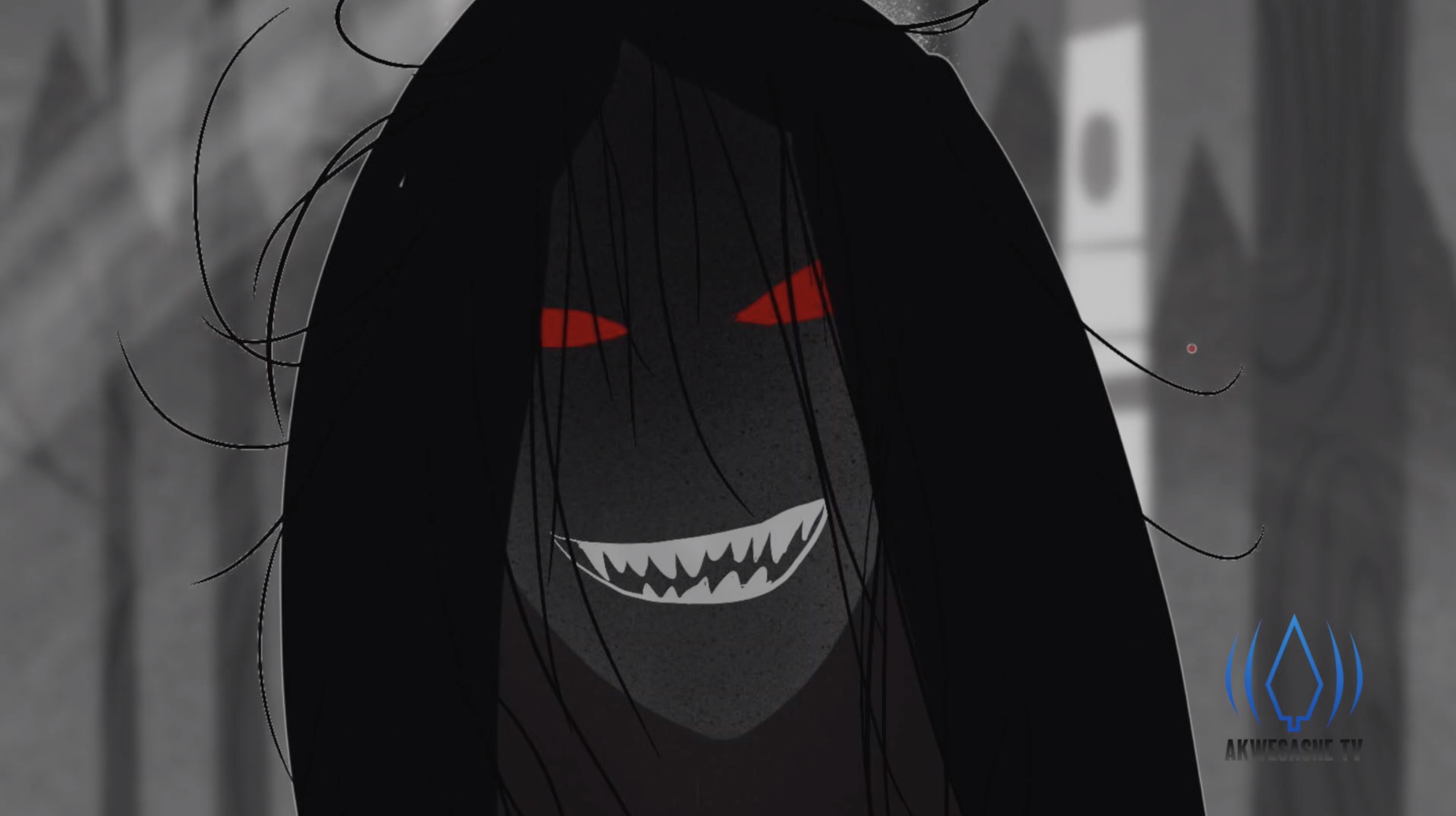This “shape shifter” is usually an outside unfamiliar person who could show up at times when our minds are weak and vulnerable and we don’t notice her hoofs.

By: Kanatires Barreiro
Growing up on an Iroquois reservation, you might have heard the legend of the ‘Hoof Lady’.
The chilling tale describes her as a woman with red eyes, long flowing black hair, and hooves instead of feet. Many variations of her story are known in different reservations scattered across New York State and the other Haudenosaunee territories in Canada.
The legend of the Hoof Lady is passed along as a warning to the younger generation, and meant to inspire obedience among the youth.
Each tribe seems to have its own story. In the Mohawk Territory of Akwesasne, they say at night she walks around Cook Rd and Snye, prowling for troublesome teens. Legend has it the Hoof Lady is a shape-shifter, and dangerously manipulative, often disguising herself as a pretty woman to gain trust.
In Kahnawake, she is said to be a beautiful young woman who wears a long red dress, and she also has goat hooves. She is a shape-shifter who visits you during your weakest point, and warns you of your wrongdoings.
Similarly, the tale of a deer spirit also known as Deer Woman is prevalent across the Omaha, Creek, Ponca, and Potawatomi tribes. Deer Woman goes after disobedient children and tramples overtly licentious men.
The idea of the Hoof Lady doesn’t seem to only exist in Indian Country. There are many variants of her story heard all around the world, dating as far back as the 1700s and as far away as the Carribean Islands. There, she is La Diablesse (Bissessarsingh, Angelo. “Legend of the La Diablesse). She wears a large hat and a long skirt to veil her glowing eyes and her hoof. Parents tell the tale in order to ensure good behaviour, same as the Hoof Lady tale.
Here in Akwesasne, the Hoof Lady is reanimated by the elders almost every fall season, just in time for Halloween. Along with this legend, we also have the Flying Head and so the legend goes that it comes in the form of a giant disembodied head and terrorizes humans, but there are a few different tales out there.
The most common is about an Onkwehonwe hunter who managed to evade the terrifying monster with the help of his two dogs. In other versions, the head belongs to a murder victim and is rumoured to be cannibalistic, — although this might be due to the confusion and similarity between the Flying Head and the Rolling Head story which is affiliated with the Cheyenne and Ojibwe tribes.
Are you a believer?
These Iroquois legends remain intriguing and continue to be passed down from generation to generation through oral tradition, – but some details may be lost while others exaggerated.
Moral of the story? Perhaps be mindful of your actions.
Stay safe this Halloween season and remember, you never know what you might see or who you may run into. Oh…and listen to your elders!
Hatskwi Sewatahon’satat!!
About the writer:

Kanatires Barreiro, 17, is the daughter of Randi and Tsiorasa Barreiro. Currently a senior at Massena Central High School. Her favourite classes are Video Production and Creative Writing. She is also in the process of applying to college with her top two choices being Syracuse University and Ithaca College, where she hopes to study multimedia journalism. As an avid reader and writer, Kanatires utilizes her literary skills in various personal and professional projects such as poetry, essay prompts, employee spotlights, and writing feature articles. Kanatires has interned at Akwesasne TV in the past, and has also worked during the summer months for the past two years as a communications intern with the St. Regis Mohawk Tribe.
Sources: (“La Diablesse.” FOLKLORISTICS, 14 Apr. 2014)
(Legendary Native American Figures: Deer Woman (Deer Lady).
(“The Woman In Red.” Indigenous Arts & Stories).


